The US 10-year Treasury yield continued rising on Thursday (Apr. 7), reaching 2.66% — the highest in over three years. The ongoing upside momentum suggests that the benchmark rate will continue to run higher. But as today’s update of CapitalSpectator.com’s fair-value model suggests, there may be limits to how far and how fast this crucial rate can rise.
Let’s start with a simple technical profile for perspective. On that basis it’s clear that upside momentum is strong—red hot, in fact. As a result, it appears that the 10-year rate remains on track to rise further.
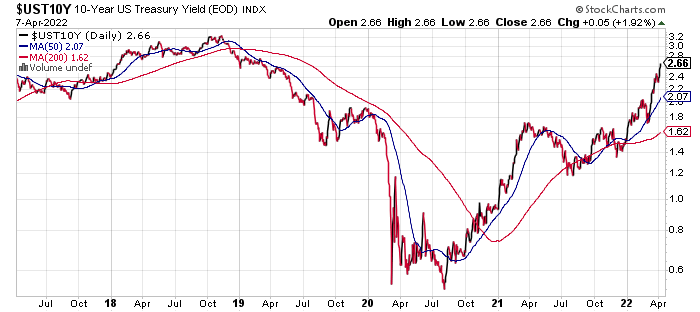
A key driver of late is the hawkish revision in estimates for the Federal Reserve’s rate-hiking plans. Fed funds futures are now pricing in high probabilities (50%-plus) for 50-basis-point rate (or more) increases for the next three FOMC policy meetings, starting with next month’s announcement (May 4). By that standard, the Fed’s current 0.25%-0.50% target rate will rise to at least 1.75%-2.0% by the July 27 meeting.
The Treasury’s market’s 2-year yield—widely seen as the most-sensitive spot on the yield curve for rate expectations — is also predicting a relatively rapid increase in Fed funds rate, which has fallen well behind the surging 2-year rate recently.
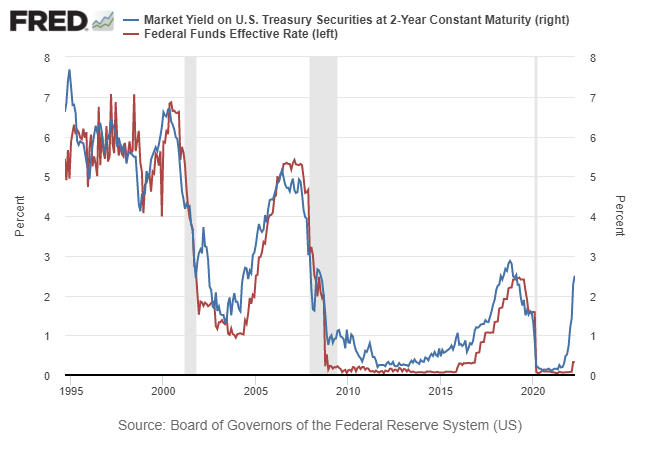
The release of Fed minutes earlier this week focused minds on the case for revising expectations in a hawkish direction. The minutes report:
“Many participants noted that one or more 50 basis point increases in the target range could be appropriate at future meetings, particularly if inflation pressures remained elevated or intensified.”
Tim Duy, chief US economist at SGH Macro Advisors, in a research note to clients, advised:
“We expect a series of at least two 50-basis-point rate hikes with a third if the data refuses to turn in a markedly dovish way by the middle of the year. On top of that, the Fed plans an aggressive pace of quantitative tightening.”
A key factor in how Fed policy plays out in the months ahead is the path of incoming inflation data. For the moment, the path is decidedly up and the central bank is clearly behind the curve by a substantial degree. The Fed’s favorite measure of inflation (core PCE prices that exclude food and energy) continued to rise in February on a year-over-year basis, reaching 5.4%, the highest since 1983.
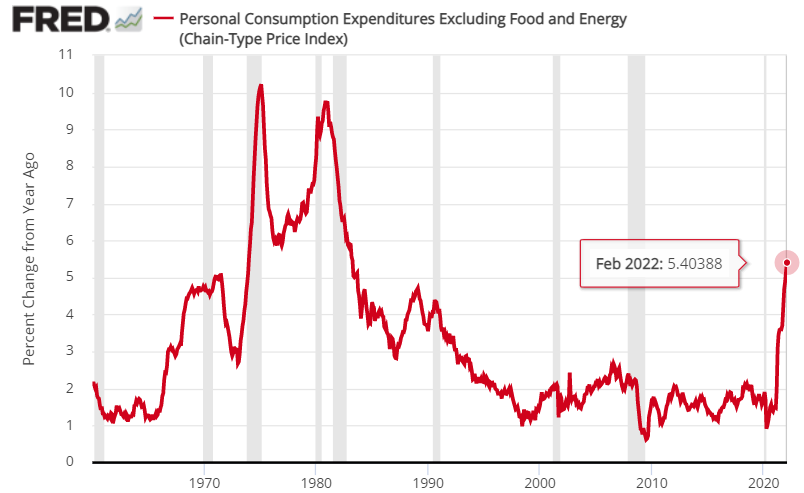
If inflation continues to accelerate or hold steady at current levels, the Fed will remain under pressure to raise rates, perhaps faster and by more than currently expected. To the extent that a kinder, gentler rate-hiking cycle is plausible, a key clue will arrive (or not) in upcoming inflation data, starting with next week’s March numbers on consumer inflation.
Meanwhile, the CapitalSpectator.com’s average fair-value estimate for the 10-year yield (based on three models) continues to indicate that the market rate should be moderately higher. The average fair-value estimate for the modeling is 2.38%, or roughly 25 basis points above the current 10-year market rate (based on data through March).
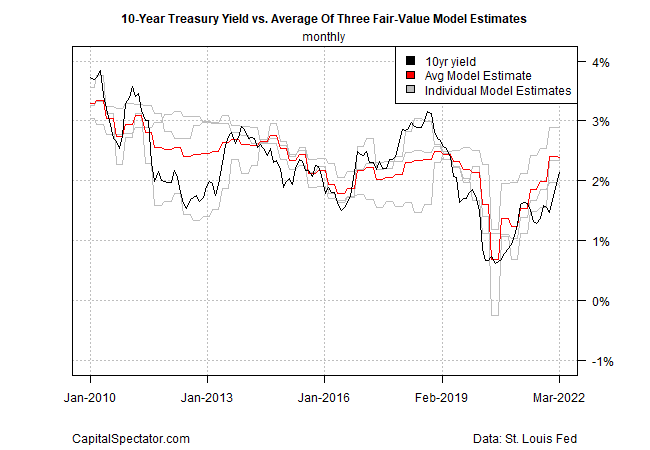
Note that the fair-value estimates continue to move sideways this year and so the gap between fair value and the market rate has been narrowing lately (see chart below). Nonetheless, the model still indicates an upside bias for the market rate. Keep in mind, too, that history shows that the market rate can rise well above the average fair-value yield for extended periods and in the current climate that’s possibility looks higher than average.
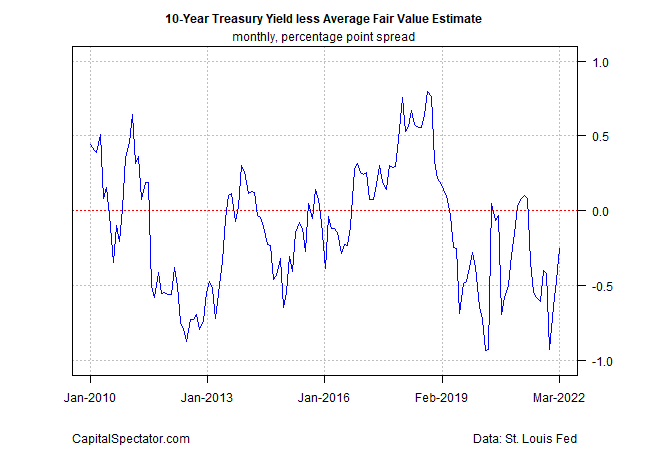
The key question is how upcoming inflation data compares? The average fair-value model suggests that there are limits to how high the 10-year rate can rise in the near term. But the model is dynamic and will adjust as new economic data is published.
The Fed appears to be betting on the possibility that it can engineer a soft landing for the economy, or so its public comments imply. Will that view be torn to shreds in next week’s update on consumer prices for March? The answer will cast a long shadow on the odds for the Fed’s ability to implement a rate-hiking cycle that doesn’t crash the economy.
